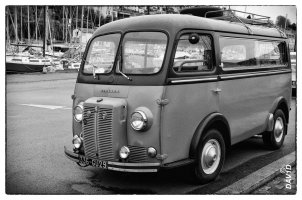Velma's Dad
Super Poster
VIP Member
The GT6 was a real fun car to drive, although like the Spitfire, in standard form it would treat you to its signature bunny-hop tuck-under if you hit a bump mid corner (worse on the Spit - I managed to roll mine that way) although sounds like you tuned yours out of that elementary fault, as did my friend.
Again I'd say the TR6 (/5/4A - all with IRS) and TR4 were different handling cars. The 6 does have some truck-like tendencies which is why I prefer the 4 with its good old cart springs and live axle which make it more precise than the later cars. People put ARBs on them but that just worsens the understeer, they turn in more crisply without and are actually pretty well balanced although snap oversteer is always on the menu.
Again I'd say the TR6 (/5/4A - all with IRS) and TR4 were different handling cars. The 6 does have some truck-like tendencies which is why I prefer the 4 with its good old cart springs and live axle which make it more precise than the later cars. People put ARBs on them but that just worsens the understeer, they turn in more crisply without and are actually pretty well balanced although snap oversteer is always on the menu.



















